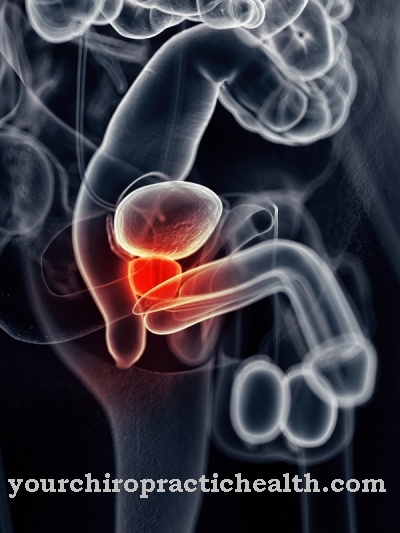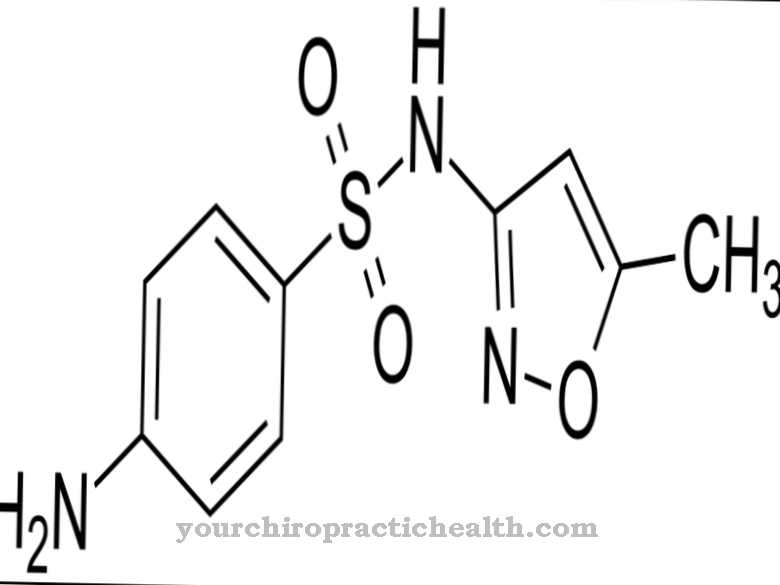As Nimodipine is called a medicinal substance. The agent belongs to the calcium channel blockers.
What is nimodipine?

Nimodipine is a calcium channel blocker that is mainly used in old age to treat performance disorders caused by brain organism, such as dementia. Nimodipine comes from the group of 1,4-dihydropiridines. Because the active ingredient can easily penetrate the CSF, it is preferably used in neurosurgery and neurology.
The blockage of the calcium channels by nimodipine has a relaxing effect on the vascular muscles. This is especially true of the brain.
Pharmacological effect
The action of nimodipine is based on the blockade of special calcium channels within the central nervous system (CNS). The positive effect of the drug is primarily developed on the blood vessels of the brain. So the agent is suitable for the therapy of vasospastic circulatory disorders of the brain.
The blockade takes place on the voltage-dependent calcium channels of the L-type. This slows down the influx of calcium into the smooth muscle cells. This in turn reduces muscle tone. The reduced muscle tone also ensures the target effect of nimodipine, the expansion of the blood vessels.
Nimodipine takes effect very quickly. The drug can penetrate the blood-brain barrier well because of its high fat solubility. Almost all of the nimodipine is absorbed in the small intestine. The breakdown of the agent is also proceeding quickly. 50 percent of the active ingredient is excreted from the body after 60 to 120 minutes.
For this reason, nimodipine is often used in the form of a sustained release substance. Retardants have the property of gradually releasing the active ingredient into the organism over a longer period of time. In this way, a continuous release of the nimodipine can be achieved so that there is always enough of the drug in the blood.
Medical application & use
Nimodipine is given to treat dementia. In the form of an infusion, the agent can also be used to treat or prevent circulatory disorders that occur following cerebral vasospasms (vascular spasms in the brain). This procedure ensures blood flow to the brain.
Brain spasms are sometimes triggered by hemoglobin breakdown products or the neurotransmitter serotonin. In addition, nimodipine is suitable for age-related brain disorders.
Nimodipine is taken orally in the form of coated tablets or infusions. Oral bioavailability is approximately 16 percent. Most of the drug is eliminated in the urine.
You can find your medication here
➔ Medicines against memory disorders and forgetfulnessRisks & side effects
By administering nimodipine, undesirable side effects are possible. However, these do not occur in every person, as there are greater individual differences in the use of medication.
In most cases, the affected people suffer from headaches, feelings of warmth, reddening of the skin, tiredness, dizziness, rapid heartbeat, angina pectoris attacks, sensory disturbances, edema (water retention) in the legs and ankles and swelling of the lower legs.
In some cases, it can also lead to inflamed veins, gastrointestinal problems, nausea, lowered blood pressure, kidney problems and a heart attack. Immediately after administration of the nimodipine, liver disorders, sweating and interruptions in the heartbeat (extrasystoles) can occur.
Nimodipine may not be used under certain conditions. This includes hypersensitivity in the patient to the drug or other calcium channel blockers related to nimodipine. It is also not advisable to take the product in the case of increased intracranial pressure, generalized brain edema and impaired liver function. The use of calcium channel blockers is also not recommended if the patient has previously undergone prolonged treatment with anti-epileptic drugs such as phenytoin, phenobarbital or carbamazepine.
Nimodipine must also not be administered during pregnancy and breastfeeding. Otherwise the active ingredient can pass into breast milk. The product should also not be used in children. The reason for this is the insufficient research on nimodipine in children.
The use of nimodipine also enables interactions with other drugs. For example, the antihypertensive effect of the calcium channel blocker is enhanced by agents that have an antihypertensive effect. These include tricyclic antidepressants, vasodilators, diuretics, and antihypertensive drugs.
If there is a combination of nimodipine and diltiazem, this often leads to unpleasant side effects. The use of beta blockers such as propranolol can lead to an increased decrease in blood pressure. As a result, there is even a risk of heart failure.
Nimodipine must also not be given together with grapefruit juice. In this way, the juice prevents the active ingredient from breaking down. In addition, the antihypertensive effect of the calcium channel blocker increases.



























